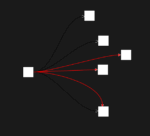Data fuels modern enterprises—all successful decisions, innovations, and strategic moves begin with reliable, accurate data. However, ensuring data quality has evolved into one of the greatest challenges faced by organizations today. With the rise in data complexity and volume, executives and decision-makers must adopt precise strategies and robust frameworks to validate, test, and ensure data quality at scale. Choosing the right data testing framework significantly impacts analytics initiatives, machine learning models, and company-wide innovation projects. As technical strategists and thought leaders in data analytics and innovation, we understand the importance of clarity and confidence in your framework decisions. In this comprehensive comparison guide, we’ll unpack the popular data quality testing frameworks, break down their strengths and weaknesses, and serve as your technology compass. Let’s dive into the world of data quality testing to help you make informed, strategic decisions.
Understanding the Importance of Data Quality Testing
Data quality testing isn’t merely a technical detail—it’s a critical strategic asset. At the heart of every successful analytics initiative lies high-quality data, acting as a foundation for trust, accuracy, and reproducibility in decision-making processes. Poor data quality, such as duplicates, missing values, inaccuracies, inconsistencies, or outdated information, can significantly hinder your organization’s ability to leverage advanced analytics, artificial intelligence, and even basic reporting accurately.
Consider a financial services firm relying on real-time data to identify potential fraud. Without robust data quality frameworks in place, inaccuracies or anomalies can undermine the entire detection system—allowing risky transactions to slip through unnoticed or worse, flag innocent activities mistakenly. Furthermore, unreliable data quality often creates hidden “data silos,” limiting information sharing and slowing down operations. To delve deeper into recognizing these critical issues in your organization, refer to our guide on how to spot data silos holding your business back.
With the explosion of big data sources, cloud warehouses, real-time data streaming, and machine learning solutions, investing in the most effective testing framework has never been more essential. The right framework can not only protect operational efficiency but provide leadership teams with reliable analytics that drive profitable, confident strategic moves.
Comparing the Leading Data Quality Testing Frameworks
Great Expectations: Comprehensive Validation for Data Teams
Great Expectations is becoming a household name in advanced data quality management. Using declarative “expectations,” this open-source Python library offers substantial flexibility, helping teams clearly define what high-quality data looks like. Its benefits are significant for data engineers, analysts, and stakeholders alike. You can easily integrate Great Expectations into your modern data stack, leveraging robust integration capabilities that extend compatibility to popular platforms like Airflow, dbt, Snowflake, and Databricks.
The framework also encourages rigorous testing through standardized data profiling, which helps engineers understand existing data quality patterns. Additionally, teams benefit from its user-friendly documentation processes and automated data validation pipelines, enabling greater organizational alignment around data expectations. We’ve witnessed clients quickly transform data confidence through Great Expectations—driving innovation, analytics, and artificial intelligence initiatives forward strategically and successfully.
However, as the framework requires a moderate-level Python proficiency, it can be somewhat limiting for teams without strong technical capabilities. Smooth adoption typically requires experienced software engineers trained in Python and data analytics. For help identifying skilled engineers who can rapidly provide strategic technical solutions, check out our insights on trusting AI for vetting and discovering the right software engineers.
dbt data-tests: Effortless Integration With Your Modern Data Stack
dbt (Data Build Tool) has risen quickly to prominence within ambitious data teams, known widely for its SQL-based automation framework and ease of use. Maneuvering seamlessly within the modern data pipeline, dbt’s built-in data-tests allow data teams to write standard SQL-based assertions about data integrity and quality. If your organization’s analytics strategy centers around SQL competence across your team, dbt testing is an attractive option for effortless integration.
Designed specifically for data transformation processes that use SQL, dbt tests can validate data freshness, data schema changes, relationships between tables, and common data quality rules such as uniqueness and null checks. The all-SQL environment simplifies participation beyond data engineers, bringing analysts and business decision-makers closer to technical teams. Enhance your team’s data-testing capabilities by understanding critical SQL functions through our guide to harnessing aggregate functions in SQL.
The downside with dbt testing is limited complexity handling compared to pure coding libraries. It is ideal for less complex data quality tests but can be cumbersome if intricate logic or broader data validation logic is needed. If complex data validation is essential, consider pairing dbt with other testing frameworks to fill gaps and achieve more comprehensive quality coverage.
Deequ: Large-Scale Data Testing for Big Data and Streaming
Built by Amazon Web Services, Deequ is a versatile and powerful data quality library that specializes in big data and large-scale streaming environments. Skyrocketing volumes of real-time analytics streams require highly efficient validation and quality tracking. Deequ integrates smoothly with distributed computing platforms, empowering data engineers to regularly run lightweight yet powerful quality analysis during large-scale data processing frameworks such as Apache Spark.
Deequ’s modular design provides customizable data metrics, profiling, and systematic validation checks, making it highly appealing for organizations dealing with massive data volume and highly dynamic data streams. Teams can monitor and set thresholds around key data quality KPIs, empowering them to quickly address issues directly where insights are generated and consumed in real-time. To better understand the role of streaming data in your business objectives, explore our guide on the role of data streaming in stopping fraud before it happens.
On the other hand, Deequ demands proficient knowledge of AWS infrastructure, Apache Spark, and Scala or Python. Thus, it may pose entry barriers for teams not already leveraging cloud computing frameworks. Organizations looking to adopt wide-scale Deequ testing need experienced streaming data engineers to facilitate this strategically complex integration.
Choosing the Right Framework for Your Data Strategy
The appropriate data testing framework should strategically align with your organization’s data maturity, technology stack, long-term growth ambitions, and existing team talen. Consider your current technical stack, organizational complexity, skill availability, potential integrations with visualizations, and long-term scalability. Visualizing your data quality tests results effectively is equally crucial. Ensure that your data visualization strategies avoid common pitfalls by learning how to accurately represent data with appropriate scales and axes.
Evaluating the trade-offs discussed, Great Expectations might suit businesses needing flexibility, thorough documentation, and broad validations. Teams invested heavily in the modern data stack powered by SQL often benefit from dbt’s simplicity. Those dealing with high-volume, real-time analytics environments might prefer scalability provided by Deequ. Struggling with clarity on relating these technological decisions to your business needs? Our NodeJS consulting services can help map out technology choices best-fit for your strategic objectives.
Ultimately, the framework you select becomes instrumental in defining the data quality mindset, efficiency, and capacity for innovation within your teams. By deeply understanding these frameworks’ strengths and weaknesses, your enterprise can leverage data as a robust strategic asset more confidently.
Achieving excellent data quality assurance strategically positions you to take advantage of advanced analytical techniques and gain actionable insights from interactive visualizations. Discover how to unlock these benefits in our article: The Benefits of Interactive Data Visualization.

























